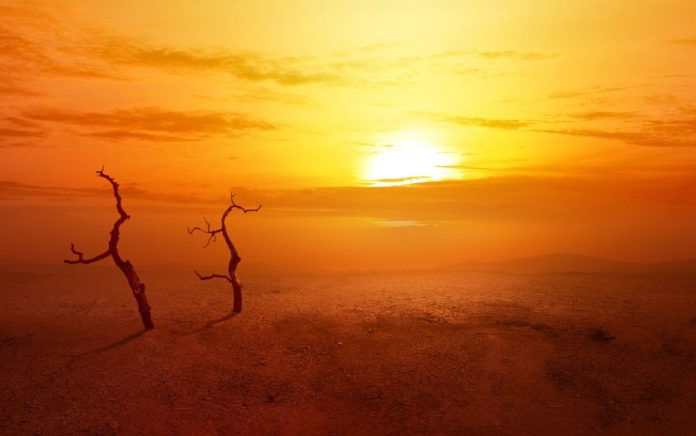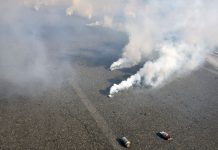(SurvivalDaily.com) – Deserts can be beautiful landscapes, especially during the early morning hours or the later evening hours. Sometimes beautiful things can be deadly, though, and that’s exactly what a desert can be. They’re arid landscapes with temperatures often in triple-digit highs in the summer and below freezing lows in the winter.
In a desert, water is your most precious resource. If you’re traveling through a desert, be sure to pack multiple gallons of water per person and plan on drinking 2 gallons per day.
If you’re running low on water, you’re not out of luck.
Where to Find Water
Water is hard to find in a desert, but not impossible. The first thing you need to do is read your landscape, so getting to higher ground will provide you with an advantage. Look for trees as the green leaves will stick out like a sore thumb against the dull colors of the desert. Look for reflections on the ground, these are likely water holes.
If you packed a pair of binoculars, then you’ll save both time and energy. You can look at these reflections with binoculars and possibly see if they’re worth the precious energy to check out.
Shaded areas can hold water and so can rock pockets and cavities. These depressions in the rock are called tinajas, the Spanish word for “earthen jar.” Water can be found here by the gallons, especially in shaded areas. The amount of water you’ll find heavily depends on that year’s rainfall, though. If there’s been a drought, you might be out of luck.
Use your situational awareness as well. If there are birds and insects flying around, you’re likely near a source of water. Don’t just ignore them and move on; take a second to look around because you might be right next to a water source and not even realize it.
You can’t afford to miss any opportunity to consume water, just don’t drink it too fast. Purifying the water is always a good idea, but if you don’t have the means to do so. Drinking dirty water isn’t ideal, but it’s better than dying from dehydration.
What Not to Do
Hollywood has glorified the idea of slicing a cactus open to drink the fluids hidden within it. This is not a good idea as cacti, especially barrel cactus (the most commonly used one in Hollywood), contains noxious fluid instead of water. This fluid is high in alkalis and will bring about cramping and vomiting when consumed, farthing your dive into dehydration. So, avoid cacti for both your health and to potentially avoid breaking the law where it’s illegal to cut a cactus.
Despite being used in many survival guides, solar stills use a lot of energy to make (though they do produce water). You’ll spend hours digging out the hole to make a solar still, and that’s assuming you brought a shovel. Also, not too many people carry a roll of plastic with them, so building a still would be impossible.
If you happen to have the supplies, it’s still recommended to avoid building one. The energy you’ll use may not be worth it in the long run.
Conserve Your Resources
While conserving your water is a good thing, conserving your sweat is even better. The less you sweat, the less water you lose.
If you can stay with your vehicle and do your best to stay out of the sun. If you find yourself having to move, do so at night while leaving plenty of notes and markers to indicate where you’re going and why.
Keep your skin covered the best you can. If you can, soak your clothes to keep cool and use urine if you have to. Keep your mouth closed and breathe through your nose to help keep your mouth from drying out.
Counter to one’s intuition, don’t ration your water. You might waste more energy by stressing over how to conserve it. You’ll need all the stamina you can get to survive, so wisely use what you have at your disposal, but don’t enforce meager water rations.
Try not to eat, too. You can survive for much longer without eating than you can without water. The body uses a lot of water when digesting and breaking down foods. Avoid salty foods in particular as salt dries your body out rapidly. If you are going to eat, try to eat very little at a time.
Preparation is Key
Perhaps the most important thing you can do is be prepared. Be sure to bring enough water for you and whoever is with you to survive at least a few days. Checking any fluids in your car before you leave can literally save your life. Taking steps to avoid being stranded in the desert could save your life.
Did you find the information in the article interesting? Do you have any other tips on how to survive in a desert environment? Reply to your email and let us know, we would love to hear from you!
~Copyright 2021, SurvivalDaily.com

















